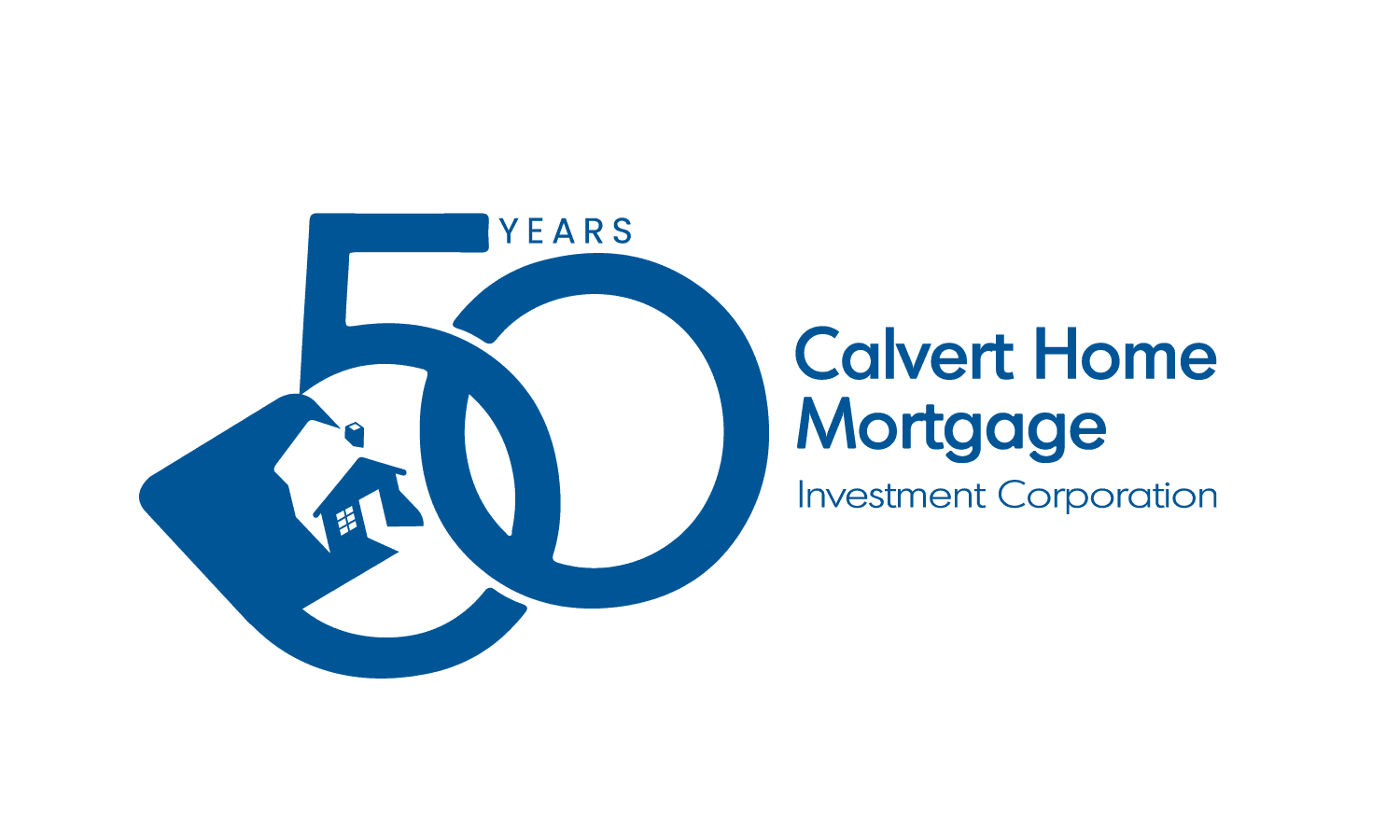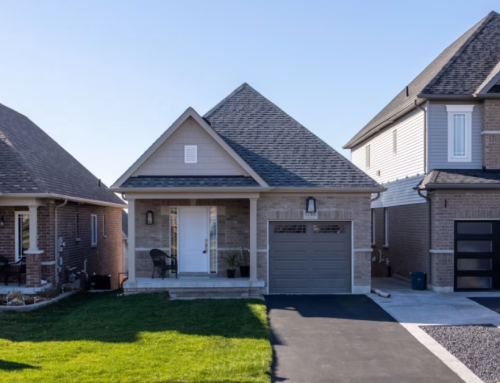Check the news these days and environmental concerns are bound to be discussed.
Rising real estate prices are also commonly on the agenda, with politicians tackling both issues in different ways.
Proposed solutions to the housing issue include an “anti-flipping tax,” or a “speculation tax.” Separate discussions surround green initiatives, which are movements related to or concerned with the protection of the environment.
There are ways to look at the two issues together, and not by adding new taxes. Additional taxes likely won’t cool the hot real estate market and may actually create other problems.
Placing the blame on “flippers” is also placing the blame on the wrong doorstep. In fact, those who purchase properties with the intention of renovating and reselling them (known as flipping), or to rent them (known as BRRR for buy, renovate, rent and refinance) can actually help the real estate market. Flipping can also support green initiatives in several ways.
Calvert Home Mortgage Investment Corporation has prepared a series of blog posts that looks at the important role of flipping and the BRRR business.
The other parts of the series are:
- 3 reasons flipping homes is good for the real estate market
- 4 ways that flipping and renovating to rent benefits communities
- 5 benefits that flip and BRRRs provide the economy
- 3 reasons an “anti-flipping tax” is counterproductive
This is another in the series, a look at 3 ways “flipping” helps support green initiatives.
1. Reduce Urban Sprawl
The reality of rising real estate prices is that low supply has created increased demand, which has resulted in rapidly rising prices. Real estate investors or flippers help with supply issues, adding turn-key properties to the market, or increasing the availability of rental properties.
This type of investment also provides properties in existing neighbourhoods, which are revitalized through that renovation and redevelopment. It also reduces urban sprawl, which happens when new development creates entirely new neighbourhoods.
Renovation and revitalization still allow cities to grow within existing neighbourhoods. Urban sprawl requires increased investment in infrastructure and a bigger carbon footprint, which is not good for the environment. Urban sprawl works against the goal of lowered emissions and a reduced carbon footprint.
Here are some examples.
The Province of Ontario used to have an Environmental Commissioner, although the office was eliminated in 2019. The former commissioner, as cited by the Ontario Professional Planners Institute, stated that the biggest source of Ontario’s energy use and greenhouse gas emissions – in other words pollution – is urban sprawl.
The impact of urban sprawl on the environment is not new. As far back as 2008, in an article in Environmental Science and Technology, Julian D. Marshall of the University Of Minnesota conducted a study on urban sprawl and concluded that “reducing urban sprawl could play an important role in addressing climate change.”
His report explained that urban sprawl includes many aspects of land use, such as:
Leapfrog development: when developers skip over land to obtain cheaper land further away from cities. This can result in large empty areas between the city and the new development.
Segregated land use: when local land use regulations like minimum lot sizes and growth controls exclude lower-income households from wealthier neighborhoods.
Automobile dependence: on-road gasoline emissions were the largest segment (62%) of transportation CO2 in the United States when the report was written.
Findings were not limited to the U.S., as megacities have grown all over the world. And the environmental impacts go beyond increased automobile emissions. The report says: “Cities’ ecological footprint — accounting for inputs and outputs such as food, consumer goods, energy consumption, and waste products — is many times larger than that of (other) land areas.”
The solution is to limit or reduce urban sprawl, looking at solutions such as creating pedestrian- and bicycle-friendly neighbourhoods, providing convenient public transit, and mixing land use, such as allowing retail near residences.
Another is city planning to use existing properties: “…cities may need to increase the supply of affordable, attractive medium- and high-density housing.”
Renovating to add dwellings to existing homes further prevents urban sprawl and helps with housing supply. For instance, adding a basement suite during a renovation can provide housing for two families where there was once only one dwelling. It can also provide rental units of different sizes and price ranges.
Ontario’s Housing Supply Action Plan, called “More Homes, More Choice,” speaks to the need for more affordable housing options. That includes homes to purchase and properties to rent. In seeking input from the public, the report heard that affordability was their top criteria when looking for a home. Next important was having transit, schools and services nearby, speaking to the desirability of creating housing in existing neighbourhoods.
While the report does highlight the need to “bring housing to market faster by speeding up local planning decisions,” it also states that the government wants to:
“Make it easier for homeowners to create residential units above garages, in basements and in laneways.”
2. Re-Use Existing Properties
Being environmentally friendly includes the principles to “reduce, re-use and recycle.”
Principle one is addressed by limiting urban sprawl, which helps reduce carbon footprint and emissions while helping to lower infrastructure costs.
Renovating existing properties to either sell or rent follows the principle of re-use and recycle. Rather than start from scratch with a new home on previously undeveloped land, flippers renovate what may be undesirable properties, adding to supply and supporting climate initiatives.
It’s called “green remodeling.”
“Remodeling is inherently greener than building new homes,” a Vice-President of a Wisconsin-based building and remodeling firm says in Architect Magazine. “You’re working with existing infrastructures and with the houses that most need to be improved and greened.”
The World Green Building Council concurs, encouraging communities to consider all stages of a building’s lifecycle, including renovation. They stress that we should seek to “lower environmental impacts and maximise social and economic value over a building’s whole life-cycle (from design, construction, operation and maintenance, through to renovation and eventual demolition).”
It’s clear that new properties alone will not ease the housing shortage. A 2021 report by Scotiabank states that “the principal challenge facing the housing market—and the underlying cause for rising prices and diminished affordability—is the substantial insufficiency of supply relative to demand.” Taxing those who renovate existing properties will work against the goal of increasing supply.
Instead, governments should look at a combination of initiatives to help with housing supply, including new development and reusing existing buildings.
Hannah Teicher, a researcher at the University of Victoria’s Pacific Institute for Climate Solutions, says that renovating existing buildings can add new housing while minimizing future emissions.
Teicher told CBC News that she has done research on embodied carbon, which she describes as the carbon footprint from the materials already used in a home or building from their extraction, processing, manufacturing and transportation.
“The first priority needs to be maximizing and reusing the existing building stock… If we retrofit (old) buildings, then we preserve all the embodied carbon that was already sunk into them.”
A report completed in 2020 for the City of Toronto’s planning division came to a similar conclusion: the city needs to enable more variety in housing, many of which can be accomplished by renovating and adding to existing properties.
The report found that there is a “missing middle” of housing options that could be among the solutions to increase choice and access to affordable housing. The “missing middle” housing types include:
- a broader range of low-rise residential building types
- single- and multi-unit housing types such as semi-detached houses, duplexes, fourplexes, and stacked townhouses
- accessory dwelling units, such as laneway suites and garden suites
- low-rise apartments
Real estate investors or “flippers” often add and renovate these types of properties when they purchase a home or other space to re-sell or to rent. By taking on this work, additional suites are created that are built following code and are safe for residents who can afford to move into a turn-key property.
In response to the City’s report, the Centre for Urban Research and Land Development at Ryerson University looked into the reasons and suggested some solutions. Known as Missing Middle Housing, this report concluded that one of the main issues is that city planning protects neighbourhoods from “densification,” or adding housing. The report stated that Toronto could add 300,000 to 400,000 secondary or additional suites to its current single- and semi-detached house stock.
Policies that encourage renovations and additions would go a long way to helping increase housing supply in a way that an “anti-flipping tax” will not.
An anti-flipping tax or speculation tax will only slow down the re-use of existing properties by hampering smaller “flippers.” If real estate investors are restricted to one property a year, the system favours large developers who will continue with the pace of urban sprawl. Housing becomes more affordable when re-use is supported, not hindered.
3. Reduce Costs
Development of existing properties can help lower costs since urban sprawl requires governments of all levels to fund infrastructure to support new communities. Increased spending means stress on government budgets, which gets passed on to citizens in the form of higher taxes.
Spending for urban sprawl includes building new roads and freeways, adding plumbing, sewer and electrical infrastructure, increasing transit and emergency services, and increased maintenance like snow removal.
Urban sprawl also increases the carbon footprint in our cities, leading to more roadways, longer commute times, less efficient public transit and commuters who are less likely to walk or bike to work. That goes against the green mandate supported by politicians and the people who elect them.
Instead, politicians are looking to limit and lower emissions and enact more environmentally friendly policies. For instance, the Federal Liberal party included “A Cleaner, Greener Future” and “A Home. For Everyone” in its 2021 election platform.
Following the 2021 election, the federal Minister of Environment and Climate Change was mandated to “bring forward an updated Emissions Reduction Plan to achieve a 40 to 45 per cent reduction in emissions by 2030 from 2005 levels.” And, that department has created a Pan Canadian Framework on Clean Growth and Climate Change, with a goal to reduce greenhouse gas emissions.
The housing shortage and climate issues are linked. Building more new homes in new neighbourhoods creates “climate change-related challenges, like preventing unchecked urban sprawl from eating into existing greenspace and necessitating the construction of more highways, which in turn perpetuates the need for more cars, trucks and SUVs.”
Here’s a tangible look at the savings to be found in revitalizing existing neighborhoods.
The City of Calgary commissioned a study in 2009 that was called the “Cost of Growth” study. It examined two scenarios for development: the “Dispersed Scenario” which reflected the trends at the time, and a new Recommended Direction which suggested that development be focused on “intensifying jobs and population in specific areas of the city and linking them with high-quality transit services.”
The report looked at infrastructure such as transportation (roads and transit), water and sewer services, police, fire, parks, recreation centres and schools, and found that the “Recommended Direction” required 25% less land, was 33% less expensive, and would be less expensive to operate and maintain over 60 years.
Here’s another example.
Michael Zaransky is an author in the United States who has published two books, including “Purchase Rehab, and Reposition Commercial Investment Property.” With a wide range of real estate, banking, and financial experience, he believes in “renovate instead of rebuild.”
In an article explaining why investors should rehab existing properties, Zaransky says renovation is more affordable and convenient. High construction costs in some areas means it is “impossible for all but the biggest, richest companies (or consortiums) to fund, plan, and construct new structures.”
He states that renovation is a better option because fewer materials are needed, existing structures are utilized, and costs are nearly always less than a new build.
His other benefits include:
- The home will fit right in with the surrounding neighborhood.
- The home can easily be made more energy efficient.
- The building can be converted into more or less units, and additions are possible as well.
It’s even been suggested by some that renovating existing properties can help aid economic recovery.
“By renovating the spaces where people live and work to be more energy-efficient and resilient to climate change, local economies can be boosted, and cities can achieve their sustainability goals and reduce their carbon footprints…Renovation is a way to create local jobs, improve life quality, reduce energy poverty and make populations more comfortable while keeping them safe.”
Clearly there are better solutions to the housing shortage and rising prices than identifying policies that restrict housing supply, like an anti-flipping tax or an anti-speculation tax.
The Bottom Line
With real estate prices continuing to increase, the search for a solution is more complex than adding taxes that will discourage the renovation of older properties. By renovating to sell or rent, “flipping” can actually form part of the solution. In fact, an attempt to use a speculation tax in 1974 was not successful in Ontario.
One of the biggest issues remains supply, and new construction will help. But the renovation of properties for resale, or to add rental units, can ease the supply problem while also supporting green initiatives.
Real estate investors are supported by alternative mortgage lenders. Alternative lenders and real estate investors work together in the business of renovating properties for resale or renting.
Calvert Home Mortgage Investment Corporation is an alternative lender in Alberta and Ontario. Contact one of the experienced Calvert underwriters for more information on how renovating existing properties is good for the environment.
Ardith Stephanson is a freelance writer and journalist who writes on a variety of topic areas.




